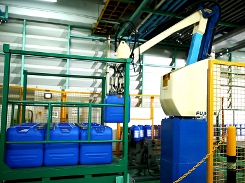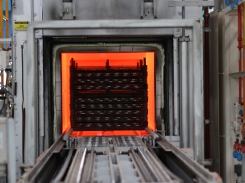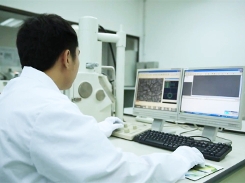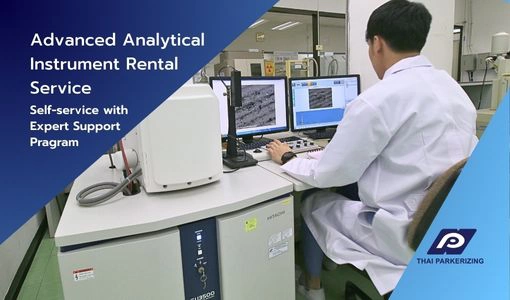- Corporate
- Chemical Products
- Chemical Controller
- Chemical for Paint Booth
- Coil Coating
- Degreasing and Cleaning chemical
- Heat&Cool exchanger (PLATECOIL)
- Hydrophilic
- Manganese Phosphate
- Nano-coating (Pallucid)
- Rolling Oil
- Rust Preventive Product
- Stearate Soap Lubricant/Dry-in-Place Lubricant (PULS)
- Trivalent Chromium/Non-Chromium
- Zinc Phosphate/Iron Phosphate
- Processing Services
- Laboratory Services
- Articles
- What's New
- Contact Us
- Privacy Policy
- E-Service
What is Chromium Plating? How is Chrome Plating Done?
24 August 2021
Numerous items are plated with chromium. Chrome plating gives car parts, silverware, cutlery, and pots and pans, door hinges and door knobs, decorative household items, and machinery an extra shine, making them more attractive and durable. Chrome plating keeps car parts safe from rust and corrosion, especially in cold weather areas. Chrome plating is used not only for metal objects but plastic and aluminum as well.
The plating process taking place in large manufacturing companies involves cleaning the item in various chemicals to keep them clear of particles of dirt, grease, or paint. The items must be free from any sharp protrusions and are ground down with a machine grinder to make them smooth to the touch. After cleaning and grinding, the item is buffed to ensure that it is smooth, and then chrome plating is done so that it is durable. Let’s dive deep into the details of what is chrome plating? and how is chrome plating done?
- What is Chromium?
- What is Chrome Plating?
- How is Chrome Plating Done on Aluminum?
- The Process of Coating Plastic in Chrome
- Chrome Plating with Trivalent Chromium vs Hexavalent Chromium
- What Types Of Chrome Plating Should You Choose?
- What Does the Future Hold Without Chrome Plating?
- Conclusion
- Related products
What is Chromium?
Chromium is a hard gray shiny metal often known as a transition metal. In Chemistry, Chromium is an element with symbol Cr and number 24 as its element. Chromium is used as a finishing element used for plating objects to make them shiny and keep them from tarnishing or corroding.
What is Chrome Plating?
Electroplating techniques are used to turn chromium into a shiny, lustrous metal plating that gives longer life to objects such as automobile parts, machinery, door knobs and hinges, and decorative objects that you may see around the house.
In the manufacturing of chrome plating an electrically charged container is filled with a chemical known as chromium anhydride. Different thicknesses of the chrome plating are applied to each object. Machinery and vehicle parts require thicker layers of chromium plating, while decorative items require thinner layers of chromium plating. Chrome plating on plastic and chrome plating on aluminium will also be different in how they are done.
How is Chrome Plating Done on Aluminum?

Automotive metal parts must be finished and plated for their durability. via Pixabay
The chrome plating process involves use of a mechanical grinder to remove any unsightly scratches or dents from the object. After the dents and scratches are removed, the object must be free from any dirt, grease, or paint. It is necessary that any grease or dirt be removed using a chemical solution before plating can be done.
Any residue left on the object has to be cleaned and rinsed, then the item is buffed and cleaned once again. A layer of copper is applied and buffed, then it is cleaned once again. Another layer of nickel is applied once the object is thoroughly cleaned. It is applied to ensure that it is durable and ready for the final touch of the chromium plating process.
Pros and Cons of Aluminum Plating
What is chrome finish? - a chrome finish is a chrome plating that strengthens aluminum giving it protection from corrosion.
- The chrome finish improves the overall look of aluminum.
- It holds up well in areas where weather conditions may cause corrosion and rust.
- The chrome plating's surface friction is very low making it more suitable for use on car parts.
- Chrome plating on aluminum can be added in different thicknesses just as it is on metal.
The Process of Coating Plastic in Chrome
No electric current is needed when coating plastic. While the process is similar to coating aluminum and metal, the first layer is different. It involves applying a coating of nickel by means of an electroless plating process rather than an electro charged current. In other words, no electric current is needed. It changes the plastic's base coat to make it more conducive to the chrome plating. Think of it as using a primer on a wall's surface before the final coat of paint is applied.
- Etching: The parts are immersed in sulfuric and chromic acids which etches tiny holes in its surface. The holes contain a coating of metal that is applied while it is being processed in the electroless plating process.
- Neutralization: The plastic part is then submerged in a special alkaline mixture neutralizing the acid to keep it safe from erosion.
- Catalyzation and Acceleration: A final bath is used to clean the part. All chemicals must be removed before the chrome plating process can begin. The final bath accelerates the film to prepare it for the final plating. After the part is cleaned, a catalytic film is applied to its surface.
- Electroless Plating: A thin layer of copper and nickel are applied after the etching, neutralizing, and catalyzing processes are completed.
- Electro-Plating: A negative charge is applied to the part after the electroless plating process is complete. A tank for chrome dipping contains positively charged ions which are attracted to the copper or nickel that was negatively charged during the electroless plating process. The chrome plating should be even so that it will easily pass inspection.
- Quality Inspection: All parts have to be inspected to ensure they have an even coat of plating with no discrepancies of any kind.
An inspector uses an error backing process where large quantities of product can be recognized and fixed before an entire batch is destroyed.
Chrome Plating with Trivalent Chromium vs Hexavalent Chromium
In addition to "chrome", have you been hearing about hexavalent chrome and trivalent chrome? Let's see what the difference is between the two?
-
Trivalent chromium
Instead of chromium trioxide, chromium sulfate or chromium chloride is utilized as the main substance in chrome plating for decorative purposes. This means that trivalent chromium is less likely to be toxic, and is a more environmentally and user-friendly method than hexavalent chromium. With trivalent chromium coating, now industries can achieve equal or better corrosion resistance as compared to hexavalent chromium plating. Unfortunately, there are still some weaknesses with trivalent chromate coating, the outer appearance being one of the weaknesses. Plus, the process may be more difficult to control. -
Hexavalent chromium
Hexavalent chromium has been used to process aluminum chromate conversion parts for ages. Hexavalent-based chromates exhibit a number of desirable characteristics, such as self-healing property, flexibility, colors, and corrosion protection. However, the process includes the use of chromium trioxide, which is one of toxic chromium compounds. Studies have shown that cumulative hexavalent chromium exposure was associated with an increased cancer risk, posing hazardous to both human health and environment.
What Types Of Chrome Plating Should You Choose?
There are two basic methods for chrome plating, which are hard chrome plating and decorative chrome plating. Depending on your purpose, you will be advised to choose the method, the process and the right chemical usage that best suits your products. This guide to chrome plating or asking for a professional consultancy should get you started and can help you to better understand the process as well as alternatives to it.
What Does the Future Hold Without Chrome Plating?
As stricter regulations are put in place to find an alternative method to chrome plating, manufacturing engineers are considering using PVD (Physical Vapor Deposition) methods instead. Because chrome plating in general is toxic and contains hazardous carcinogens, aerospace engineers are searching for non-toxic finishes such as PVD coating. They are studying copper bearings as an alternative method used in the assembly of an airplane's landing gear.
One of the more toxic forms of chromium is hex-chromium which causes employees to be at high risk of health hazards because it is proven that it contains carcinogens. Research is being done to determine why chromium was used at all. They are exploring different methods of plating to not only do away with the toxic elements but also to find better ways of disposing of it.
Conclusion
Depending on the product's purpose and application, different methods and types of chemicals used in chrome plating may be utilized. Make sure that your service provider has enough expertise to provide you consultation and deliver favorable results. Thai Parkerizing is the leader in surface treatment, rust preventive and heat treatment business and electroplating technology for a wide range of purposes.
Related products
Tag :









